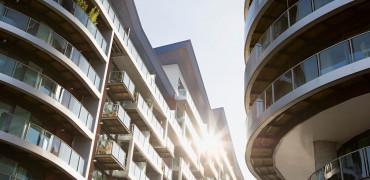Heating system upgrades are usually the last thing on people’s minds during the warm season, yet as tenants are less likely to require heating during the summer, it is arguably the best time to repair, upgrade or even replace ageing heating systems and improve the energy efficiency of your housing stock.
A new heating system is one of the most critical items to consider while performing planned maintenance and there are three basic questions to ponder:
- Is the current heating system as efficient as it could be?
- Is it delivering appropriate comfort and quality for my tenants?
- Does it cost more money to run than it should?
If you're concerned about your answer to one or more of these questions, it's time to rethink how you heat your tenant’s homes.
Housing associations are constantly striving to cut carbon emissions and improve their renewable credentials while ensuring the highest level of tenant satisfaction.
It will not only be efficient and ecological to replace heating systems like direct electric and storage heaters with renewable alternatives, but it will also greatly increase comfort levels and provide a level of control that many tenants seek in this, the technological age.
Why not take advantage of the nice weather now and save yourself a future problem?
A stich in time
"A stitch in time saves nine!" as the old proverb goes, so when inefficient heating systems are used for long periods of time, they can cause significant damage to a home.
Mould and moisture are hazardous, ugly, and damaging to furniture; at its worst, it can render a home uninhabitable and unproductive.
Repairing the damage is a time-consuming and unnecessary investment because you are wasting your time and money if you don't address the root cause of the moisture.
Heat pumps, which are ideally suited to continuous operation, give a more consistent degree of comfort for tenants when the house is inhabited while also reducing mould, damp, and damage when the house is vacated.
The property suffers less damage and requires less maintenance by allowing tenants to heat all of their home at a cheaper cost, rather than just warming one or two rooms. This decreases the likelihood of it falling into disrepair.
The role of heat pumps
Heat pumps, such as the market-leading Ecodan, contribute to the creation of a healthy indoor environment for both the tenants and the building itself.
They also lower operating expenses, saving money on future heating bills and enhancing environmental credentials. Ecodan is one of the most efficient product on the market, with an ErP grade of A++.
HAs that use renewable energy solutions like heat pumps can be assured that they are protecting their assets as well as their tenants, offering comfortable homes while avoiding unneeded and avoidable costs... there’s no better time to consider an upgrade than summer!
Ecodan heat pumps are simple to design and install, taking less time to fit and causing less interruption to a home.
The systems are also considerably easier to maintain than gas systems, and with a professionally maintained unit having an average lifespan of 15 to 20 years, you may save money on maintenance and have fewer disturbances to your property.
The cost
All landlords and housing organisations must pay for the upkeep of outmoded heating systems, as well as the eventual replacement of the complete system.
We can ensure that we are doing our business in an ethical, ecologically friendly, and fiscally prudent manner by strategically arranging these improvements throughout the year and taking precautions to avoid being struck with hefty repair bills in the winter, when disruption to heating can be devastating.
Why not take advantage of the nice weather now and save yourself a future problem?
Did you know that over two thirds of homes with lower energy efficiency, of D or below, could be brought up to band C for a cost of less than £10,000?
According to the English Housing Survey conducted by the government, It would cost less than £10,000 to improve over two thirds of dwellings (69%) to a band C, and about £15,000 or more to improve another 11% of dwellings.
The average cost to raise dwellings with an EER band D to G into an EER band C was estimated to be £8,110.
The average cost was highest for owner occupied homes (£8,579), followed by the private rented sector (£7,646). The average costs for local authority and housing association dwellings were similar at £6,067 and £5,910, respectively.
In summary
UK homes are among the most expensive to heat in Europe due to inadequate maintenance and insulation.
There is much to be done.
Let’s make hay while the sun shines this summer and take a look at our heating systems so that they are fit for out tenants and their future.
Joe Bradbury is digital editor of Housing Association magazine




